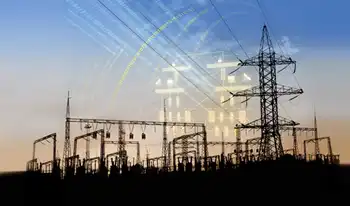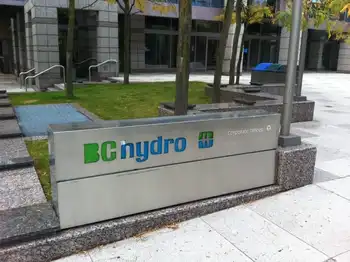- Pair of Pickering reactors taken off line again
Less than a week after promising an idled nuclear reactor at Pickering would be producing full power by the end of September, Ontario Power Generation has been forced to take it out of service.
In a related development yesterday, officials at the Bruce Power nuclear plant on Lake Huron said their facility is ready to produce more electricity — four months behind schedule. They wouldn't set a date.
Using the two units at the Bruce A complex is essential to keep heaters running in Ontario this winter if imports of hydro are to be avoided, the Independent Electricity Market Operator said in its latest outlook.
The future of the hydro supply has been a major issue in the election campaign, which ends with tomorrow's vote.
Pickering's idled Number 4 reactor, which got up to 70 per cent capacity at this time last week, went down on Saturday morning, according to reports filed with the IMO.
Within a couple of hours, the nearby Number 5 reactor at Pickering also went down.
OPG won't say exactly what's wrong, how long it will take to fix or when the troubled Number 4 reactor — which has received major renovations worth more than $1 billion since it was shut down in 1997 — will produce electricity again.
The repairs were supposed to be finished three years ago.
"We discovered there was a minor equipment issue we wanted to repair,'' OPG spokesperson John Earl said recently.
"I can't tell you how long it's going to be because that's commercially sensitive information."
Earl said the problem at the Number 5 reactor is also a minor equipment issue. He would not elaborate, but said autumn is a good time for repairs between the peak summer air conditioning season and the winter heating season.
"The good news is the weather is gentle and electricity usage is lower,'' said Tom Adams, executive director of Energy Probe, a watchdog group that keeps a close eye on Ontario's hydro system.
"If the same thing happened in winter or summer, it would be much more serious."
The two units at Pickering are capable of producing about 5 per cent of the province's electricity needs at this time of year.
Adams said he wasn't surprised by the shutdowns, especially at the retrofitted Number 4 reactor, because the units are three decades old and previous renovations have made their complicated engineering systems even more so.
"It's reasonable to expect some teething problems,'' he said, adding the problem at the Number 4 reactor is "probably some difficulty arising from the maintenance work."
The Number 5 reactor is close to its natural retirement age unless it gets major renovations, which makes it unlikely to be a reliable producer of electricity, Adams said.
"When you're squeezing the last few drops of juice from a lemon, it's reasonable to expect firefly type of performance, meaning off and on."
What annoys him more is the unwillingness of Ontario Power Generation to reveal in more detail what exactly the latest problems with the reactors are.
"A near-monopoly claiming it's commercially sensitive information is really rich .... The condition of these reactors is treated as if it's a state secret."
OPG's argument is that since it sells electricity into the province's grid system, too much detail about its electricity supply situtation could tip competitors and skew the market.
Adams said it's difficult to guess when the two reactors could be back in operation since restoring them to full power must be done in stages.
"It could be days or it could be months if it goes badly."
At the Bruce plant near Kincardine, Bruce Power chief executive Duncan Hawthorne said the Bruce A Number 4 reactor is "actually making steam right now'' after lengthy repairs and will start producing hydro "very, very shortly."
But he added: "I'm not going to give you a specific date."
The Bruce A Number 3 reactor is within a few weeks of making steam, which drives the turbines to create electricity, Hawthorne said.
"The track record of these reactors coming back from long outages is they have often had serious production problems .... I do not think we are out of the woods yet," Adams said.
Related News

Hydro-Quebec adopts a corporate structure designed to optimize the energy transition
MONTREAL - As Hydro-Québec prepares to play a key role in the transition to a low-carbon economy, the complexity of the work to be done in the coming decade requires that it develop a global vision of its operations and assets, from the drop of water entering its turbines to the behind-the-meter technologies marketed by its subsidiary Hilo. This has prompted the company to implement a new corporate structure that will maximize cooperation and agility, making it possible to bring about the energy transition efficiently with a view to supporting the realization of Quebecers’ collective aspirations.
Toward a single, unified Hydro
Hydro-Québec’s…




